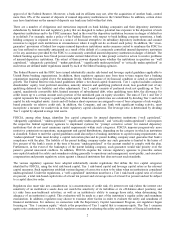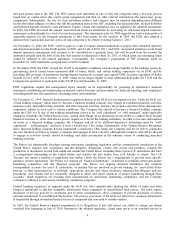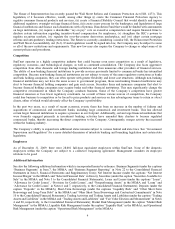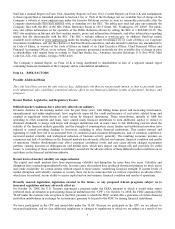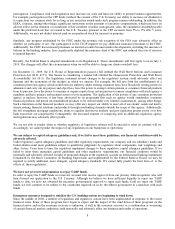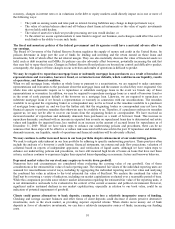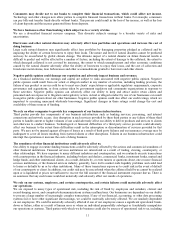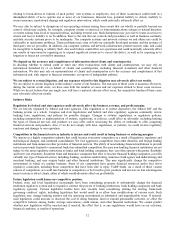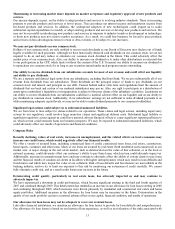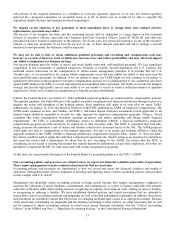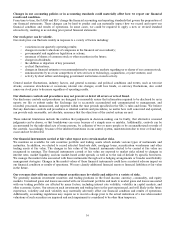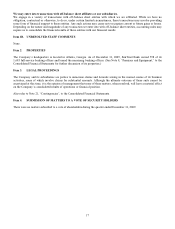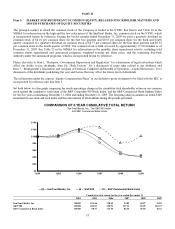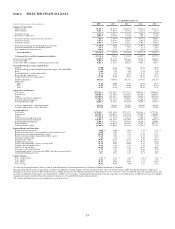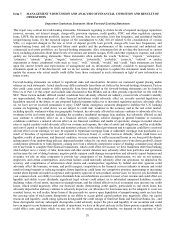SunTrust 2009 Annual Report Download - page 26
Download and view the complete annual report
Please find page 26 of the 2009 SunTrust annual report below. You can navigate through the pages in the report by either clicking on the pages listed below, or by using the keyword search tool below to find specific information within the annual report.economy, changes in interest rates or in valuations in the debt or equity markets could directly impact us in one or more of
the following ways:
• The yield on earning assets and rates paid on interest-bearing liabilities may change in disproportionate ways;
• The value of certain balance sheet and off-balance sheet financial instruments or the value of equity investments
that we hold could decline;
• The value of assets for which we provide processing services would decline; or
• To the extent we access capital markets to raise funds to support our business, such changes could affect the cost of
such funds or the ability to raise such funds.
The fiscal and monetary policies of the federal government and its agencies could have a material adverse effect on
our earnings.
The Board of Governors of the Federal Reserve System regulates the supply of money and credit in the United States. Its
policies determine in large part the cost of funds for lending and investing and the return earned on those loans and
investments, both of which affect the net interest margin. They can also materially decrease the value of financial assets we
hold, such as debt securities and MSRs. Its policies can also adversely affect borrowers, potentially increasing the risk that
they may fail to repay their loans. Changes in Federal Reserve Board policies are beyond our control and difficult to predict;
consequently, the impact of these changes on our activities and results of operations is difficult to predict.
We may be required to repurchase mortgage loans or indemnify mortgage loan purchasers as a result of breaches of
representations and warranties, borrower fraud, or certain borrower defaults, which could harm our liquidity, results
of operations, and financial condition.
When we sell mortgage loans, whether as whole loans or pursuant to a securitization, we are required to make customary
representations and warranties to the purchaser about the mortgage loans and the manner in which they were originated. Our
whole loan sale agreements require us to repurchase or substitute mortgage loans in the event we breach any of these
representations or warranties. In addition, we may be required to repurchase mortgage loans as a result of borrower fraud or
in the event of early payment default of the borrower on a mortgage loan. Likewise, we are required to repurchase or
substitute mortgage loans if we breach a representation or warranty in connection with our securitizations. The remedies
available to us against the originating broker or correspondent may not be as broad as the remedies available to a purchaser
of mortgage loans against us, and we face the further risk that the originating broker or correspondent may not have the
financial capacity to perform remedies that otherwise may be available to us. Therefore, if a purchaser enforces its remedies
against us, we may not be able to recover our losses from the originating broker or correspondent. We have received an
increased number of repurchase and indemnity demands from purchasers as a result of borrower fraud. This increase in
repurchase demands, combined with an increase in expected loss severity on repurchased loans due to deteriorated real estate
values and liquidity for impaired loans, has resulted in an increase in the amount of accrued losses for repurchases as of
December 31, 2009. While we have taken steps to enhance our underwriting policies and procedures, there can be no
assurance that these steps will be effective or reduce risk associated with loans sold in the past. If repurchase and indemnity
demands increase, our liquidity, results of operations and financial condition will be adversely affected.
We may continue to suffer increased losses in our loan portfolio despite enhancement of our underwriting policies.
We seek to mitigate risks inherent in our loan portfolio by adhering to specific underwriting practices. These practices often
include the analysis of a borrower’s credit history, financial statements, tax returns and cash flow projections; valuation of
collateral based on reports of independent appraisers; and verification of liquid assets. Although we have taken steps to
enhance our underwriting policies and procedures, we have still incurred high levels of losses on loans that have met these
criteria, and may continue to experience higher than expected losses depending on economic factors and borrower behavior.
Depressed market values for our stock may require us to write down goodwill.
Numerous facts and circumstances are considered when evaluating the carrying value of our goodwill. One of those
considerations is the estimated fair value of each reporting unit. The estimated fair values of the individual reporting units are
assessed for reasonableness several ways, including by aggregating the individual reporting unit’s fair value and analyzing
the combined fair value in relation to the total estimated fair value of SunTrust. We analyze the combined fair value of
SunTrust by reviewing a variety of indicators, including our market capitalization evaluated over a reasonable period of time.
While this comparison provides some relative market information regarding the estimated fair value of the reporting units, it
is not determinative and needs to be evaluated in the context of the current economic and political environment. However,
significant and/or sustained declines in our market capitalization, especially in relation to our book value, could be an
indication of potential impairment of goodwill.
Clients could pursue alternatives to bank deposits, causing us to lose a relatively inexpensive source of funding.
Checking and savings account balances and other forms of client deposits could decrease if clients perceive alternative
investments, such as the stock market, as providing superior expected returns. When clients move money out of bank
deposits in favor of alternative investments, we can lose a relatively inexpensive source of funds, increasing our funding
costs.
10




